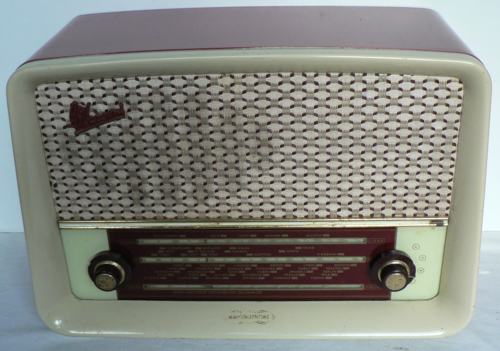
serial number 3340

Marconi model T62DA AC/DC mains operated table radio with
Long, Medium and VHF wavebands (1160-1940, 188-545 metres and 88-101
Mc/s housed in a red and cream painted Bakelite cabinet 280mm wide
230mm high and 13mm deep. Valve line up: UCC85, UCH81, UF89, UABC80,
UL84 and UY85. 1958 UK.
This is one of six radios which used to belong to the late Mr R M Nightingale given to me by his daughter. Roy Nightingale worked at Cambridge Instruments for many years.
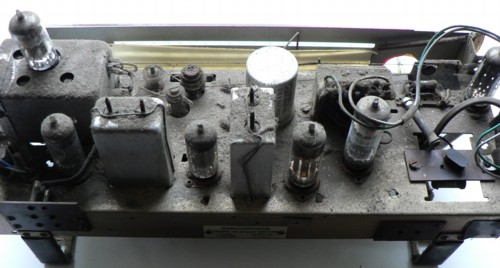
When I received this radio it was very dusty and the elliptical speaker was missing. After dismantling the cabinet was washed and the chassis carefully cleaned with a moistened toothbrush and pipe cleaner. The switch contacts and potentiometers were then given a dose of switch cleaner. I had a 4 ohm circular loudspeaker which had been lying on the shelf which by careful surgery with a hacksaw could be made to fit the baffle board and be clamped in place with the original fixings.
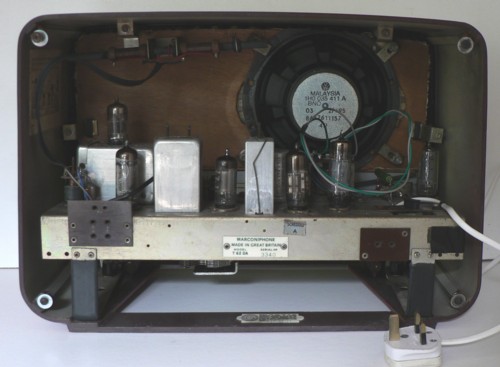
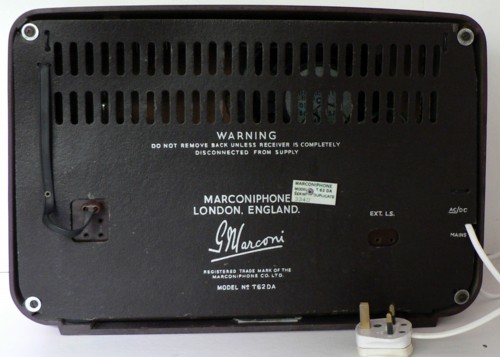
Once the chassis was clean it was clear that some of the components had been getting hotter than they should and that most of the small "Hunts" capacitors had cracked casings. Testing with a "Megger" proved that they were indeed in need of replacement,the low voltage electrolytics were changed at the same time though the main electrolytic smoothing capacitors seemed OK (dated October 1957).One of the dial lamps was open circuit and the main carbon dropper resistor (2700 ohms) was replaced with a wire wound item. Some of the faulty components are shown below.
The mains cable was replaced and equipped with a plug and I energised the set with a lamp in series with the supply (to limit the current if any thing was seriously wrong). Silence and signs of overheating! This, I found out was because the rectifier valve UY85 had a heater to cathode short. Hunting through my valve boxes I found two spares, one of which had an open circuit heater but the second proved to be OK. With this in place the set worked on all three wave bands but the output was distorted. I had missed another little "Hunts" capacitor, the one between the tone and volume controls was effectively short circuit. With this replaced all that remains electrically is to replace the dial lamps.


Labels on inside of cabinet.
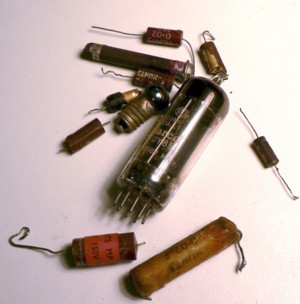

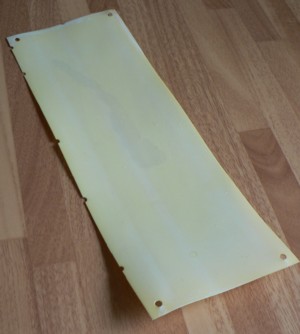
Between the dial lamps and the pointer is a piece of translucent plastic held in place with helical springs which over the years had severely warped it so that it interfered with the tuning pointer. I had some success with immersing it in very hot water and keeping it flat with a board and heavy weight. I cut two pieces of thin aluminium and drilled two holes in each to correspond with those in the plastic and mounted these at each end to relieve some of the tension on the plastic.

